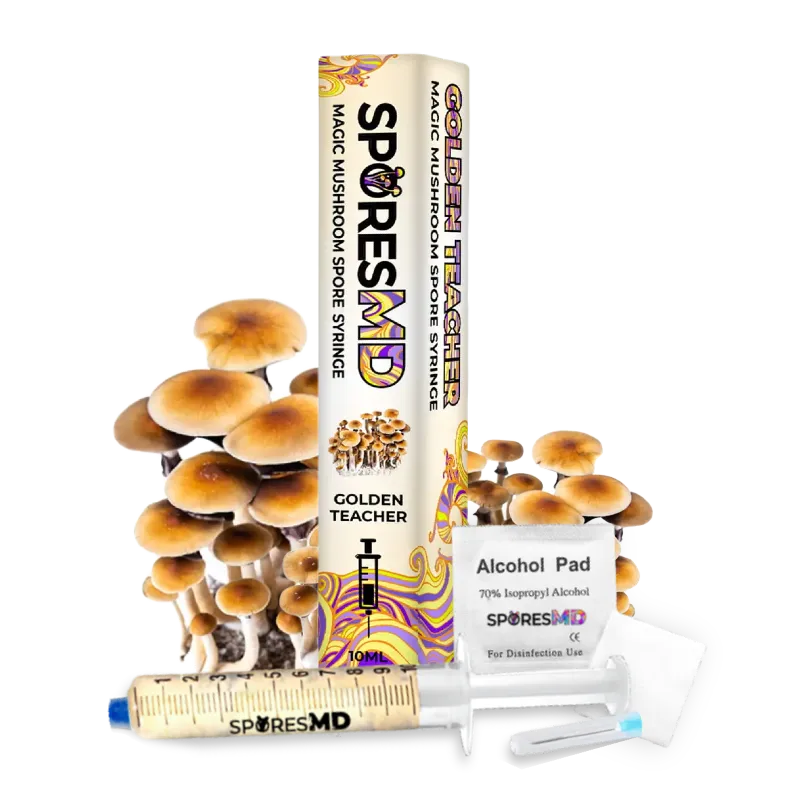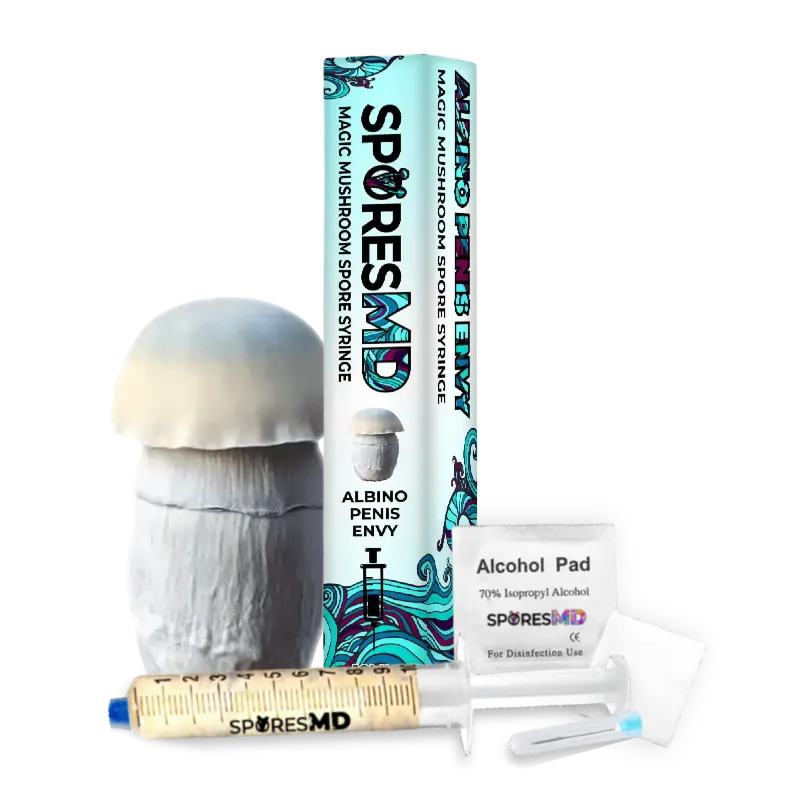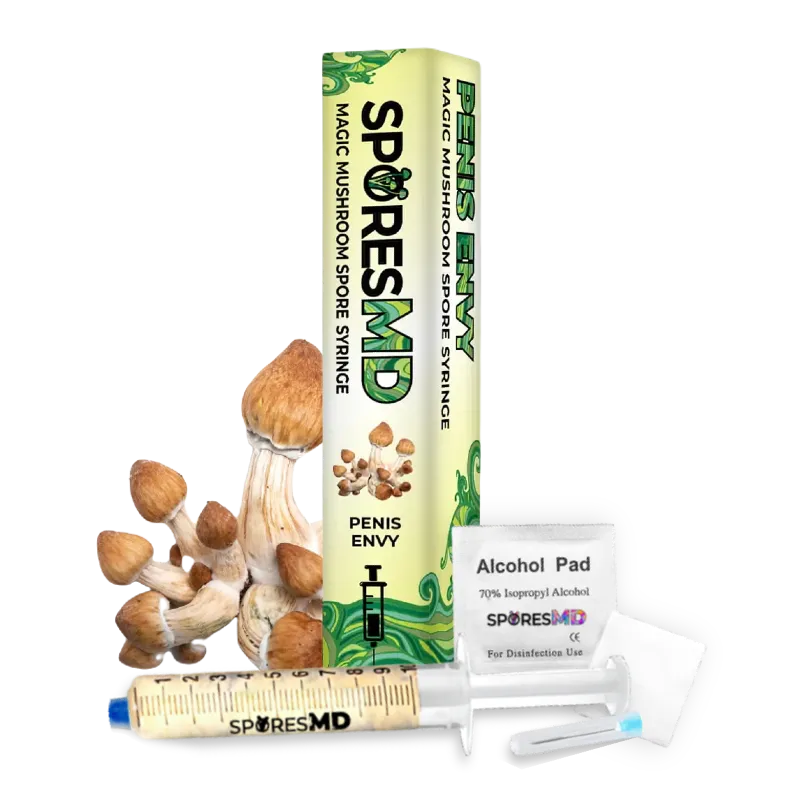Imagine this. You’re walking through a forest, breathing deeply. Suddenly, you inhale something unexpected: mushroom spores. It sounds harmless, right? But if you have asthma or sensitive lungs, this scenario could trigger more than just a scenic memory. These tiny particles can lead to coughing, wheezing, and difficulty breathing. Especially dangerous are puffballs, which release dense clouds of spores into the air.
Breathing in these spores isn’t just an outdoor hazard; it can have serious health implications. From mild irritation to severe lung diseases, the impact varies. There’s even a condition called lycoperdonosis, a severe reaction to inhaling massive amounts of spores from mature puffballs. And it doesn’t stop there; some mushroom toxins can attack your liver and kidneys with alarming speed.
So, what exactly happens when these invisible invaders enter your body? Let’s dive deeper into the world of mushroom spores and their potential effects on your health.
Key Takeaways
- Health Risks from Mushroom Spores: Breathing in mushroom spores can lead to serious health issues, particularly for those with asthma or sensitive lungs, including respiratory problems, allergic reactions, hypersensitivity pneumonitis, and severe lung diseases.
- Understanding Mushroom Spores: Spores are vital for fungal reproduction, dispersing through wind, water, or animal hosts to germinate in conducive environments. Diverse in shape and size, these spores can travel vast distances and affect air quality.
- Preventive Measures are Essential: To mitigate health risks, it’s crucial to wear protective masks in high-spore environments, ensure good ventilation indoors, and practice good hygiene after exposure to areas with high concentrations of mushroom spores.
- Medical Interventions: In cases of significant exposure, anti-inflammatory medications, corticosteroids, antifungal treatments, and oxygen therapy may be necessary. Regular monitoring and consultation with healthcare professionals are advised for individuals experiencing respiratory issues or symptoms post-exposure.
- Safe Practices When Handling Mushrooms: For both enthusiasts and professionals, understanding the types and behaviors of local mushrooms can guide precautionary measures. Wearing N95 masks, consulting occupational health specialists, and staying informed about spore release patterns are recommended.
- Educational Resources: For those interested in further information about mushrooms or spore safety, resources like SporesMD offer educational content, safe handling practices, and an array of mushroom spore syringes for study or cultivation.
Understanding Mushroom Spores
Nature and Purpose of Spores in Fungi
Mushroom spores serve a crucial role in the reproduction and distribution of fungi. Unlike plants, mushrooms don’t rely on sunlight for energy. Instead, they disperse billions of microscopic spores into the environment to propagate their species. These spores, capable of traveling vast distances by wind, water, or animal hosts, are effectively the seeds of the fungal world. When conditions are right—typically in environments rich with decaying organic material—these spores germinate, giving rise to new fungal networks known as mycelium. This process ensures the survival and spread of fungi across diverse habitats.
Common Types of Mushroom Spores
There’s a vast diversity among mushroom spores, with each species producing spores that have unique shapes, sizes, and colors. Broadly speaking, these can be categorized into basidiospores and ascospores, with the former being common among most gilled mushrooms. Some of the well-known spore types include:
- Ellipsoid spores, typical of many edible mushrooms.
- Globular to subglobular spores, often found in puffballs and other gasteroid fungi.
- Cylindrical spores, associated with polypores and some wood decay fungi.
Different spore types not only signify the mushroom species but also affect how and where they’re most likely to germinate and thrive. It’s this diversity that helps ensure mushrooms can colonize a wide array of environments, from forest floors to your garden.
Remember, while mushroom spores play a pivotal role in the ecosystem and are fascinating to study, inhaling them can pose health risks, especially to individuals with sensitivities or respiratory conditions. Always handle mushrooms with care, whether you’re foraging in the wild or cultivating them at home.
Health Implications of Breathing in Mushroom Spores
Breathing in mushroom spores may seem harmless, but it can have significant health implications for some individuals. Understanding these risks is crucial, especially for those with pre-existing respiratory conditions or sensitivities.
Respiratory Issues and Hypersensitivity Pneumonitis
Exposure to mushroom spores can lead to respiratory issues, including Hypersensitivity Pneumonitis (HP), a condition characterized by inflammation of the lungs due to an immune response. Symptoms of HP might include coughing, difficulty breathing, and chest tightness. Studies show that removing the source of spores, such as contaminated materials in homes, can result in symptom improvement.
- Symptom onset can be acute, appearing after a few hours of exposure, or chronic, developing over months or years.
- Prevention includes wearing masks in environments where spore concentration is high and ensuring proper ventilation in indoor spaces.
Potential for Asthma Attacks and Allergic Reactions
Mushroom spores can trigger asthma attacks and allergic reactions in sensitive individuals. The body may perceive spores as foreign invaders, leading to an allergic response. This can include symptoms such as sneezing, nasal congestion, itchiness, and in more severe cases, asthma attacks.
- Individuals at risk include those with pre-existing asthma or allergies.
- Mitigating risk involves minimizing exposure to spores by wearing protective masks and gloves when handling mushrooms or being in environments with high concentrations of spores.
In summary, while mushroom spores play a crucial role in the ecosystem by aiding in the reproduction and distribution of fungi, they can pose health risks to certain individuals. By taking preventive measures such as wearing protective gear and ensuring good indoor air quality, you can enjoy the benefits of mushrooms and their spores without compromising your health.
How Mushroom Spores Can Affect Your Health
Mushroom spores, while crucial for the fungal lifecycle, can pose health risks when inhaled. Understanding these risks ensures you’re prepared and protected, especially if you’re handling mushrooms directly or spending time in environments where spores are prevalent.
Short-Term Effects of Spore Inhalation
Inhaling mushroom spores can lead to a range of short-term respiratory symptoms, some immediate and others appearing after prolonged exposure. Here’s what you might experience:
- Coughing and Wheezing: Your body’s first line of defense against the foreign particles.
- Breathing Difficulties: Spores can irritate your airways, making breathing laborious.
- Throat Irritation: A scratchy or sore throat is common due to the irritant nature of spores.
- Eye Irritation: Spores can agitate your eyes, leading to redness and itching.
Long-Term Health Risks
Repeated or prolonged exposure to mushroom spores isn’t just a short-term concern. It can also lead to more severe health issues:
- Hypersensitivity Pneumonitis: This condition is an allergic reaction in your lungs, manifesting from regular spore inhalation.
- Asthma Exacerbation: For those with asthma, spore exposure can trigger more frequent and severe attacks.
- Chronic Bronchitis: Constant irritation from spores can lead to bronchitis, characterized by prolonged coughing and mucus production.
- Fungal Infections: Rare but possible, especially in individuals with compromised immune systems. Fungal spores can take root in your lungs, leading to infections.
Research studies have delineated the possible health outcomes from inhaling various types of spores, including mushroom spores. Pulmonary function tests, for instance, often reveal reduced lung capacity and diffusing efficiency for carbon monoxide (DLCO) among exposed individuals. Chest X-rays and CT scans typically show fine opacities and other abnormalities in lung fields indicative of spore-related damage.
In handling mushrooms or spending time in environments like mushroom farms or woodlands, wearing a mask and ensuring good ventilation can mitigate inhaling harmful spores. Always prioritize your respiratory health by adopting safety measures against potential spore exposure.
Preventive Measures and Safety Tips
Breathing in mushroom spores might seem harmless, but it poses significant health risks, especially for individuals with sensitive lungs or asthma. After understanding the dangers, your next step is to learn how to protect yourself effectively. Let’s explore some essential preventive measures and safety tips.
Reducing Exposure in High-Risk Environments
High-risk environments, particularly where mushrooms are grown or processed, demand specific strategies to minimize spore inhalation:
- Ensure Proper Ventilation: Work in well-ventilated areas to dilute and disperse spores, reducing their concentration in the air.
- Use HEPA Filters: Installing HEPA filters in mushroom growing or processing areas can help capture airborne spores, substantially reducing inhalation risks.
- Limit Time Spent: If you’re in an area known for high spore counts, reduce the duration you spend there. It’s crucial for individuals with respiratory issues.
Protective Practices for Mushroom Workers and Enthusiasts
For those regularly handling mushrooms or venturing into environments dense with spores, protective measures are non-negotiable:
- Wear Masks: A mask, preferably N95 or higher, serves as a critical barrier, filtering out spores before they reach your respiratory system. It’s an essential tool for both workers and enthusiasts exploring areas with high spore concentrations.
- Practice Good Hygiene: After handling mushrooms or spending time in spore-rich environments, clean your clothes and take a shower to remove any lingering spores.
- Stay Informed: Knowledge is power. Understand the types of mushrooms in your area and their spore release patterns. This knowledge can guide you to take precautions at the right times and places.
- Seek Professional Advice: If you’re working in mushroom cultivation or are a frequent forager, consulting with a specialist in occupational health can provide personalized strategies to minimize your risks based on the specific types of mushrooms you encounter.
Taking proactive steps to reduce exposure and adhering to protective practices can significantly mitigate the health risks associated with breathing in mushroom spores. Whether you’re a mushroom worker, an enthusiast, or simply someone concerned about spore exposure, remember that your health is paramount. Equip yourself with the knowledge and tools necessary to stay safe while enjoying the fascinating world of mushrooms.
Medical Intervention for Mushroom Spore Inhalation
When it comes to the health risks associated with breathing in mushroom spores, understanding the necessary medical interventions can make a significant difference. Whether you’re a professional in the mushroom industry or just an enthusiast, staying informed is crucial.
Diagnosis and Treatment Options
The diagnosis of health issues related to mushroom spore inhalation typically involves a thorough medical history review and various diagnostic tests. These tests may include pulmonary function tests to assess lung capacity and imaging tests like chest X-rays or CT scans to visualize any inflammation or damage in the lungs.
For treatment, options vary based on the severity of the symptoms and the specific condition diagnosed. Generally, treatment may include:
- Anti-inflammatory medications: To reduce lung inflammation.
- Corticosteroids: To treat more serious conditions such as hypersensitivity pneumonitis.
- Antifungal medications: If a fungal infection is the cause.
- Oxygen therapy: For patients experiencing significant breathing difficulties.
Regular monitoring and follow-up appointments with a healthcare provider are crucial to adjust treatment plans as needed.
When to Seek Professional Healthcare Advice
Knowing when to seek medical advice is critical for your health. If you experience symptoms such as persistent coughing, difficulty breathing, or flu-like symptoms after being exposed to mushroom spores, it’s essential to consult a healthcare professional. Early intervention can prevent more serious health issues down the line. Here are signs that it’s time to seek professional advice:
- Persistent respiratory symptoms that worsen over time
- Fever or chills indicating a possible infection
- Unexplained fatigue or weight loss
For individuals working in environments with high exposure to mushroom spores, regular health check-ups can help identify any problems early. Additionally, adopting safe handling practices and protective measures can minimize risks.
Being proactive about your health and seeking timely medical advice when experiencing symptoms related to mushroom spore inhalation is vital. Stay informed, stay protected, and don’t hesitate to reach out to healthcare professionals when necessary.
Conclusion
Breathing in mushroom spores can pose significant health risks, especially if you have asthma or sensitive lungs. With the potential for both short and long-term effects, it’s crucial to take preventive steps like wearing masks and to be aware of the symptoms that signal the need for medical intervention. Regular check-ups are essential for those at higher risk, and knowing when to seek professional advice can make all the difference. By staying informed and adopting safe handling practices, you can protect your health while still enjoying the world of mushrooms. Remember, resources like Spores MD are there to guide you on safe mushroom interaction, ensuring you have the knowledge to avoid unnecessary exposure to spores. Stay safe, stay informed, and don’t hesitate to seek medical help if you suspect you’ve inhaled mushroom spores.

![5 Critical Effects of Breathing in Mushroom Spores [2024 Guide]](https://sporesmd.com/wp-content/uploads/2024/05/fSwqFkX0ZGXt-t-XWOvp.jpeg)



